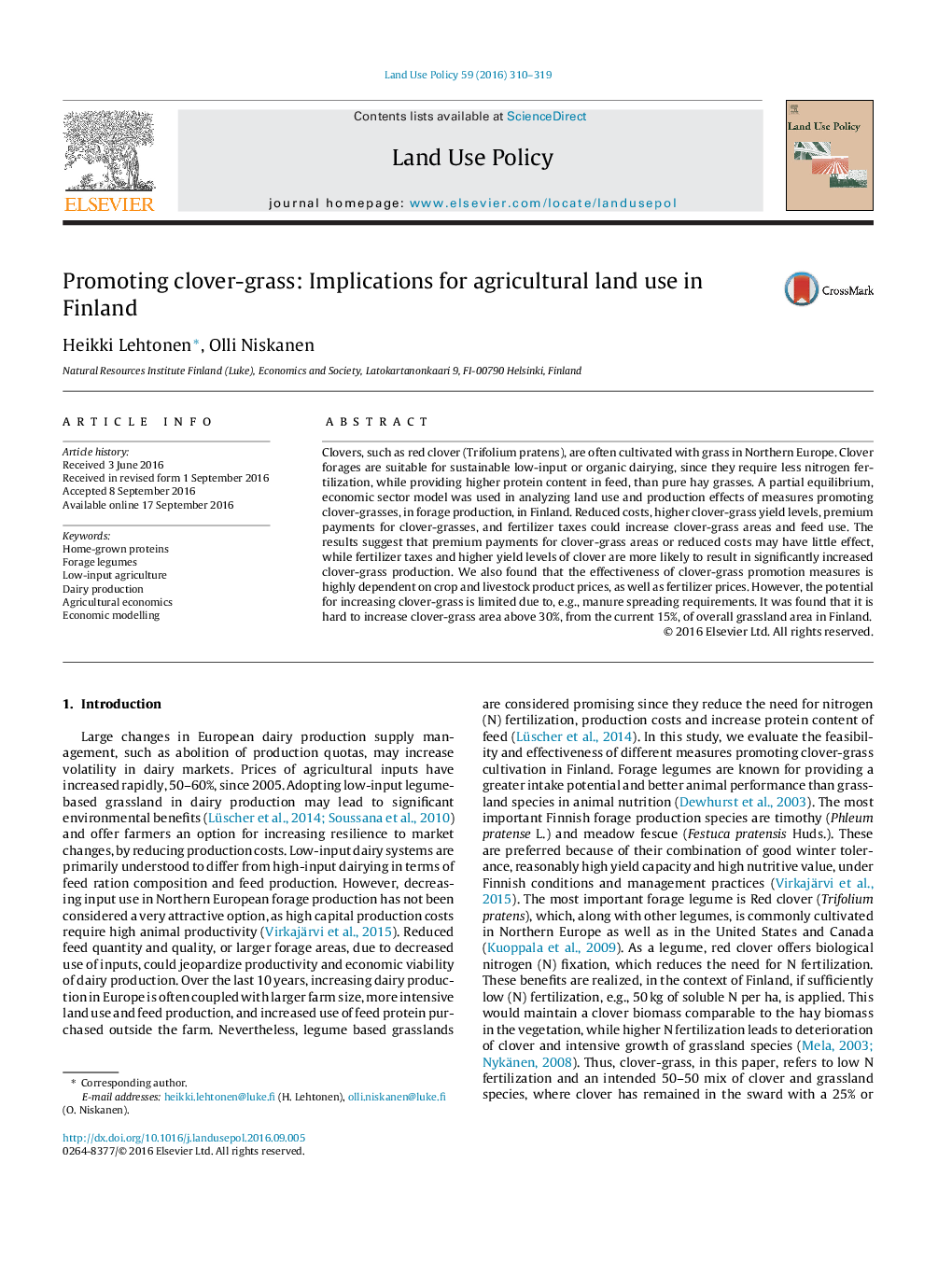| کد مقاله | کد نشریه | سال انتشار | مقاله انگلیسی | نسخه تمام متن |
|---|---|---|---|---|
| 6461541 | 1421824 | 2016 | 10 صفحه PDF | دانلود رایگان |
- Land use effects of promoting clover-grasses in forage production were analyzed.
- Premium payments or reduced costs of clover-grass cultivation had small effects.
- Fertilizer tax and higher yield levels boosted clover-grass production.
- High prices of protein feeds and fertilizers would increase clover-grass areas.
- Potential for clover-grass is limited due to manure spreading requirements.
Clovers, such as red clover (Trifolium pratens), are often cultivated with grass in Northern Europe. Clover forages are suitable for sustainable low-input or organic dairying, since they require less nitrogen fertilization, while providing higher protein content in feed, than pure hay grasses. A partial equilibrium, economic sector model was used in analyzing land use and production effects of measures promoting clover-grasses, in forage production, in Finland. Reduced costs, higher clover-grass yield levels, premium payments for clover-grasses, and fertilizer taxes could increase clover-grass areas and feed use. The results suggest that premium payments for clover-grass areas or reduced costs may have little effect, while fertilizer taxes and higher yield levels of clover are more likely to result in significantly increased clover-grass production. We also found that the effectiveness of clover-grass promotion measures is highly dependent on crop and livestock product prices, as well as fertilizer prices. However, the potential for increasing clover-grass is limited due to, e.g., manure spreading requirements. It was found that it is hard to increase clover-grass area above 30%, from the current 15%, of overall grassland area in Finland.
Journal: Land Use Policy - Volume 59, 31 December 2016, Pages 310-319
